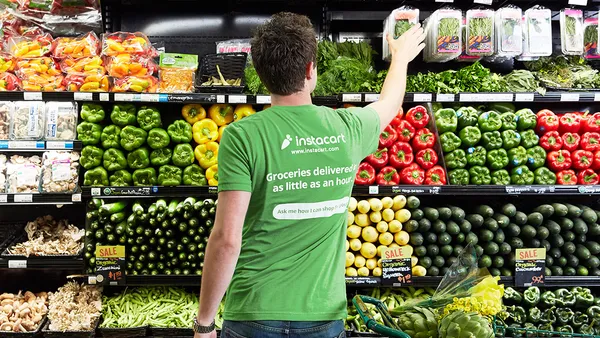Most of us are familiar with the old axiom: "Right product, at the right place, at the right time!" However, there is an important piece missing from this statement – price! With demand modeling and statistical forecasting at the forefront of the decision-making process, having a relevant and effective pricing strategy is critical.
Price is the most important input and output of statistical modeling forecasts. Without price, we cannot derive relevant demand plans. The right price will lead to better sales, better margins and less waste.
Pricing has long been – and will continue to be – a core capability for retailers. Executives and merchants alike recognize it as one of the key value levers, and, accordingly, retailers have worked to refine their pricing strategy, tactics, and tools over the past several decades in hopes of optimizing their approach.

McKinsey & Company
"Pricing in Retail: Setting Strategy"
Phases of the product price life cycle
The journey a product makes during the assortment lifetime is referred to as the product life cycle. Products may have short or long life cycles, or somewhere in between. Products may be seasonal or ongoing, subject to frequent replenishment or a one-time buy. However the life cycles differ, they go through the same phases: regular/new product pricing, promotional, and clearance or markdown pricing.
Regular/new product pricing phase
The product pricing life cycle begins when a product is introduced to the market. It's crucial to get the starting price right and keep it that way. To meet company goals, the price must be relevant, demonstrate value and drive demand. It's also important that the price is in relation to other products in the assortment - good/better/best or national vs. private brand – to ensure a perception of quality and value.
It's important to understand how price compares with competition and how it fits with your company's overall pricing strategy. Sometimes the strategy is to offer the lowest price on everything (Every-Day-Low-Price or EDLP), sometimes only on key items (Hi/Low), maybe somewhere in the middle or even at a premium.
Of course, you must also consider size, category role, and affinity. Typically, a rules-based approach is used to manage regular prices, provide visibility into pricing decisions and help boost productivity of pricing managers. Once you establish the rules then you can apply advanced analytics to maximize revenue, margin and sell-through, or any combination thereof.
Promotional phase
The details of executing and managing the promotional strategy are likewise important, in terms of influencing assortment or category sales and margin targets. Halo effects (purchase of product X frequently results in purchases of complementary products) and cannibalization (promoted product X steals sales from a group of products that are considered substitutes) should be part of the promotional strategy – not an unintended consequence.
Statistical models can help you understand these effects at the product and category/assortment-level and to accurately forecast lift and margin impact. For instance, SAS supports multiple scenarios for optimized and manual promotions based on optimization objectives, events, holiday effects, advertising/pricing rules and vendor funding. This helps you determine which products to promote, as well as the estimated sales and margin impact, so that you can adequately stock the promotion and optimize your strategy.
Clearance phase
The clearance phase can be the most difficult part of the product price life cycle to plan and has the potential to make or break profitability goals.
The traditional approach of standard price drops at set times across all stores fails to take item-specific demand into consideration and can result in a backlog of inventory and deeper markdowns than would otherwise be required to move the merchandise.
Use of analytics and AI in product pricing life cycle
Recent advancements in artificial intelligence (AI) have made its use imperative in product price life cycle optimization – particularly for determining when a product price should change due to competitive activity and when a product should clear.
AI can help identify slow sellers by flagging items that may need a promotion or that may need to begin the discount process earlier. This has the potential to earn back margin that would have been lost due to poor sales and unnecessarily deep discounting. For example by using product attribution, AI can identify commonalities in product categories – such as seasonality, shelf-life and product affinity – that are critical to executing timely promotional activity and holistic clearance plans. The work that AI performs frees category managers up for more important tasks, like investigating exceptions. You can implement AI as a simple set of rules, then develop complex and sophisticated machine-learning algorithms as adoption grows. A good set of models considers the following:
- Historical performance.
- Price effects (price elasticity).
- Cross effects (such as halo and cannibalization effects).
- Holiday and event effects.
- Trend and seasonality.
Conclusions
Gone are the days when organizations could effectively manage these pricing decisions in Microsoft Excel spreadsheets and Access databases. Margin pressure requires the use of optimization tools that can automatically operationalize best-in-class pricing strategies across large numbers of SKU's and categories.
The SAS Revenue Optimization suite supports pricing analytics across all phases of the product price lifecycle. Whether the challenge is ensuring competitive price points on existing and new products, strategically maximizing promotions to meet sales plans, or profitably clearing overstocks, SAS advanced analytics and revenue optimization can help meet your organizational goals.
For more information about SAS Revenue Optimization go to SAS.com/Revenue-Optimization-Suite










